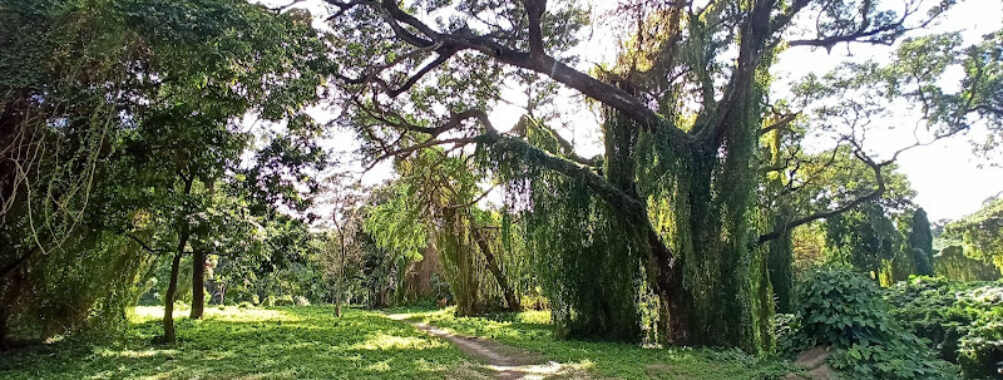
Parque Almendares
Table of Contents Parque Almendares, one of the most distinctive green lungs in Havana, Cuba, is a place that blends the spirit of the city with the calm whisper of nature. Locals often call it part of the bosque de La Habana, a forest-like sanctuary that sits right along the Almendares River. Imagine a spot where families, couples, and curious travelers gather under enormous trees while the murmur of water cuts through the tropical air. It’s exactly that—a mix of wild calmness and urban proximity that’s rare in the Cuban capital. And honestly, it’s a place that kind of sneaks up on you. One minute you’re walking along concrete streets, and the next, you’re surrounded by dense forest sounds, like stepping into another world lying just beyond Vedado and Miramar. This park might not have the polished, manicured lawns that one might expect from metropolitan parks elsewhere, but that’s part of its charm. It’s natural, it’s imperfect, and that’s the beauty of it. The park’s landscape is scattered with ancient banyans whose roots look like sculptures and pathways that twist under canopies so thick the sunlight filters through in dreamy patterns. You’ll even stumble upon something quite unusual—massive dinosaur sculptures that have become iconic. Kids adore them, and adults can’t help but grin at the novelty. There’s also an amphitheater tucked into the green space where community events, small concerts, and spontaneous gatherings often happen. Parque Almendares isn’t trying to be flashy. It’s more of a quiet retreat where the city crunch gives way to chirping birds and scattered laughter. You’ll see people picnicking, playing with dogs, dancing to portable music, or simply sitting by the river, lost in thought. It’s a place that feels alive in a very grounded way, shaped by locals but sincerely welcoming to travelers. Though it could use a touch of maintenance in places, its authenticity remains its greatest draw. It’s more than a park—it’s an ecosystem within the city. A place for contemplation, laughter, and maybe a little people-watching. Even artists and musicians seem to find renewed inspiration here. The truth is, Parque Almendares feels different depending on the time of year and day you visit. If you’re traveling through Havana, Cuba, between November and April, you’ll probably get the most out of it. That’s the dry season, meaning clear skies, mild humidity, and temperatures that make long walks enjoyable without melting into the pavement. Morning is particularly magical. The forest wakes up slowly, light glimmers through the branches, and the river seems to carry that calm energy of a new day. Late afternoons, just before sunset, are another favorite—the warm golden light reflecting off the Almendares River has that old Havana glow photographers dream about. That said, even during Cuba’s rainy season, the park holds its charm. Sure, you might get caught in a sudden tropical downpour, but watching the rain dance across the treetops is an experience on its own. I remember sitting on a bench there once, without an umbrella (bad planning, I know), watching as the entire forest seemed to breathe—the earthy smell after the rain was something you can’t describe; you just have to feel it. And if you go on weekends, expect to see more local families picnicking or musicians adding unexpected rhythm to the atmosphere. So unless you’re afraid of a few raindrops, every season has its magic here. Reaching Parque Almendares isn’t complicated, though Havana’s charming maze of streets might make it feel like an adventure. The park lies in the area where Vedado meets Miramar, right by the Almendares River, not far from the famous tunnel that passes under the waterway. For travelers staying near the Malecón or central Havana hotels like the Hotel Nacional, it’s about a 10–15 minute taxi ride depending on traffic. If you’re one of those who enjoy walking, the route from Vedado can be done on foot—just prepare for some uphill streets, warm air, and a few curious looks from locals accustomed to seeing few tourists wander that far on foot. Public transport exists, but timetables can be unpredictable. The easiest and least stressful way is by taxi or a private car hire through your accommodation. If you rent a bicycle (and feel adventurous), the ride from downtown Havana to Parque Almendares offers some scenic pockets of city life—you’ll pass classic 1950s cars, old colonial houses, and the occasional street musician serenading passersby. Once you see large clusters of trees and hear the river’s soft rumble, you’ll know you’ve arrived. There isn’t a grand gate announcing the park, which adds to its earthy authenticity. It’s almost as if the city quietly hands you over to nature. If you’re planning to spend a few hours in Parque Almendares, a little preparation will make your visit smoother and more enjoyable. Based on both locals’ experience and my own wanderings, here are some useful tips to keep in mind: If you’re traveling with children, you’ll find it particularly rewarding—the playground area and dinosaur corner guarantee their attention for at least an hour or two. And for pet owners, it’s one of those rare Cuban parks where dogs are not just tolerated but actually welcomed. You’ll often see them racing along the open lawns, tails wagging against a backdrop of palm trees and artful wooden benches. For those who find serenity in simpler things—like sitting on a worn bench by the water or sketching under the shade of an enormous ceiba tree—this park gifts you that quiet, introspective Havana moment that others might miss. Despite its imperfections, Parque Almendares remains one of the city’s truest escapes: a natural pause button planted in the heart of Havana, Cuba. And perhaps, that’s what makes it so worth seeking out. Description
Key Features
Best Time to Visit
How to Get There
Tips for Visiting
Location
Places to Stay Near Parque Almendares
Find and Book a Tour
Explore More Travel Guides
No reviews found! Be the first to review!